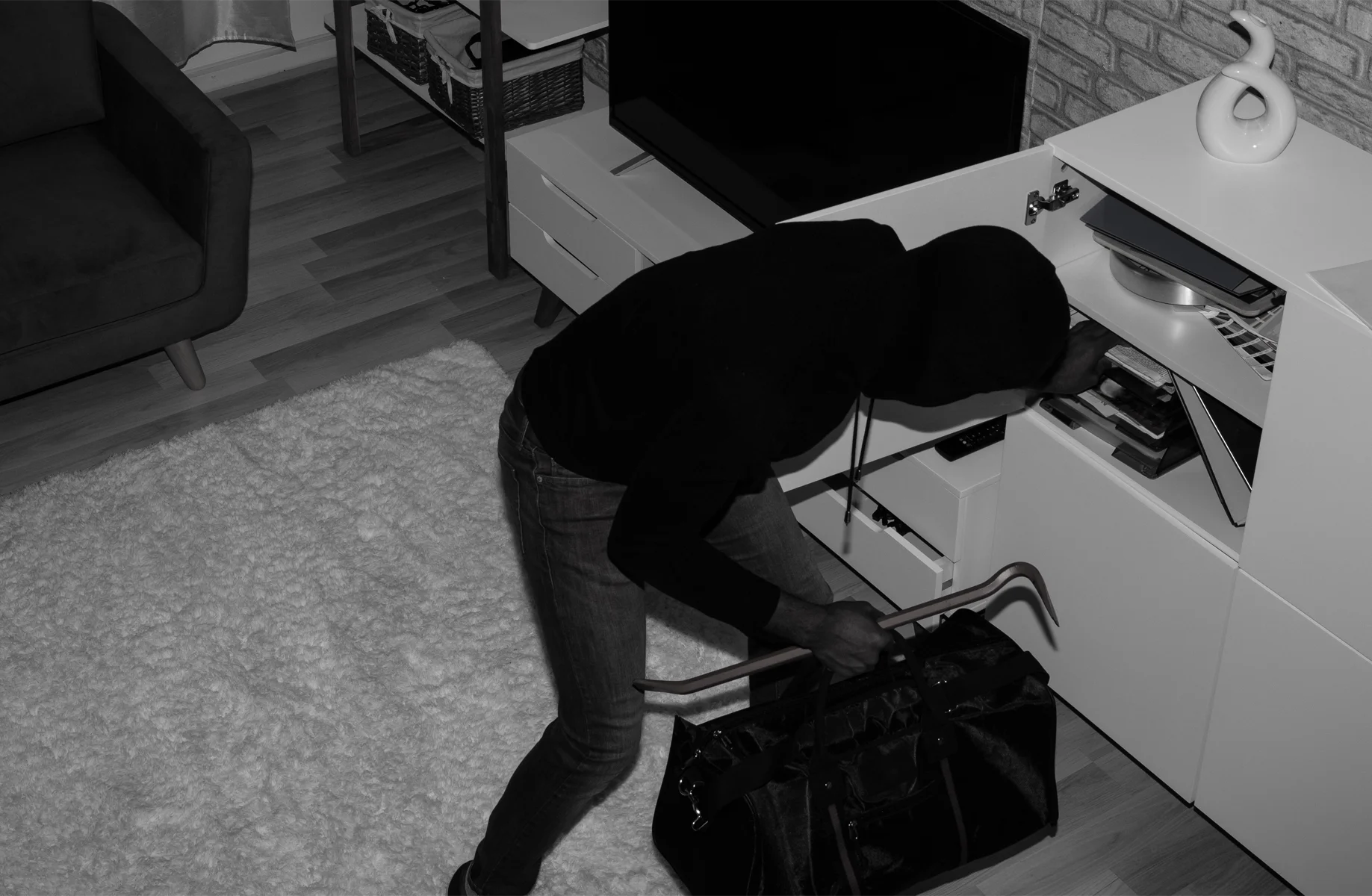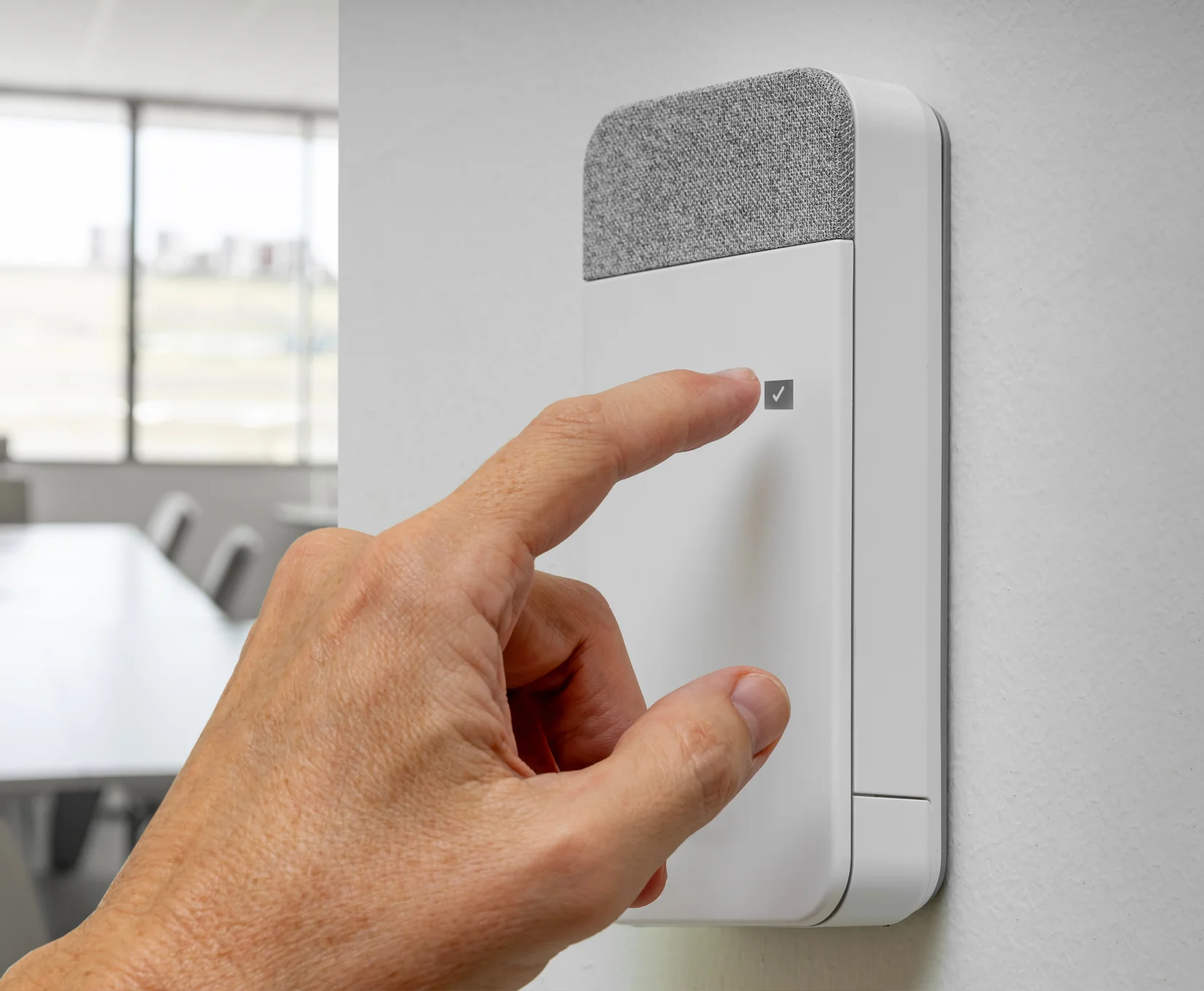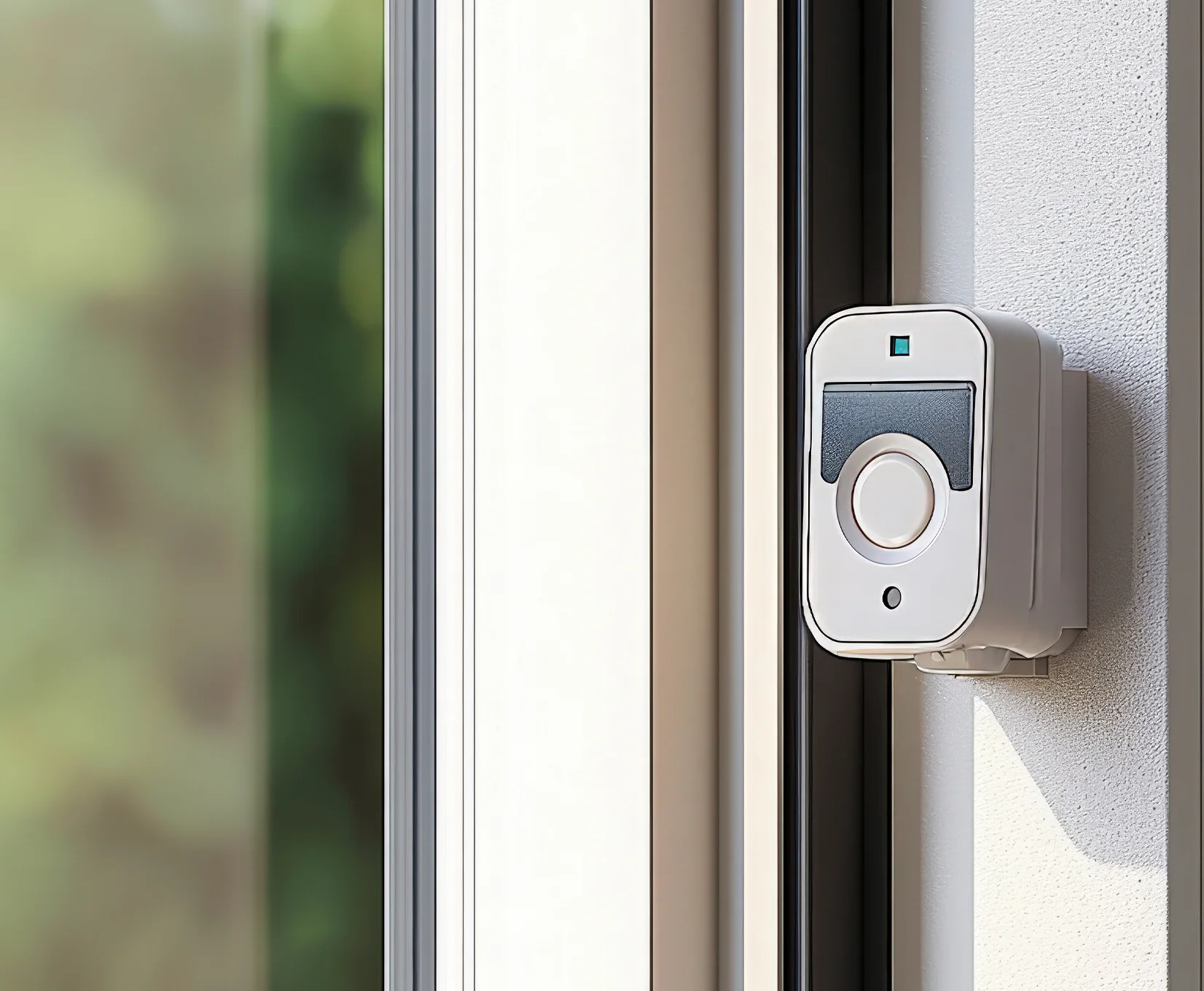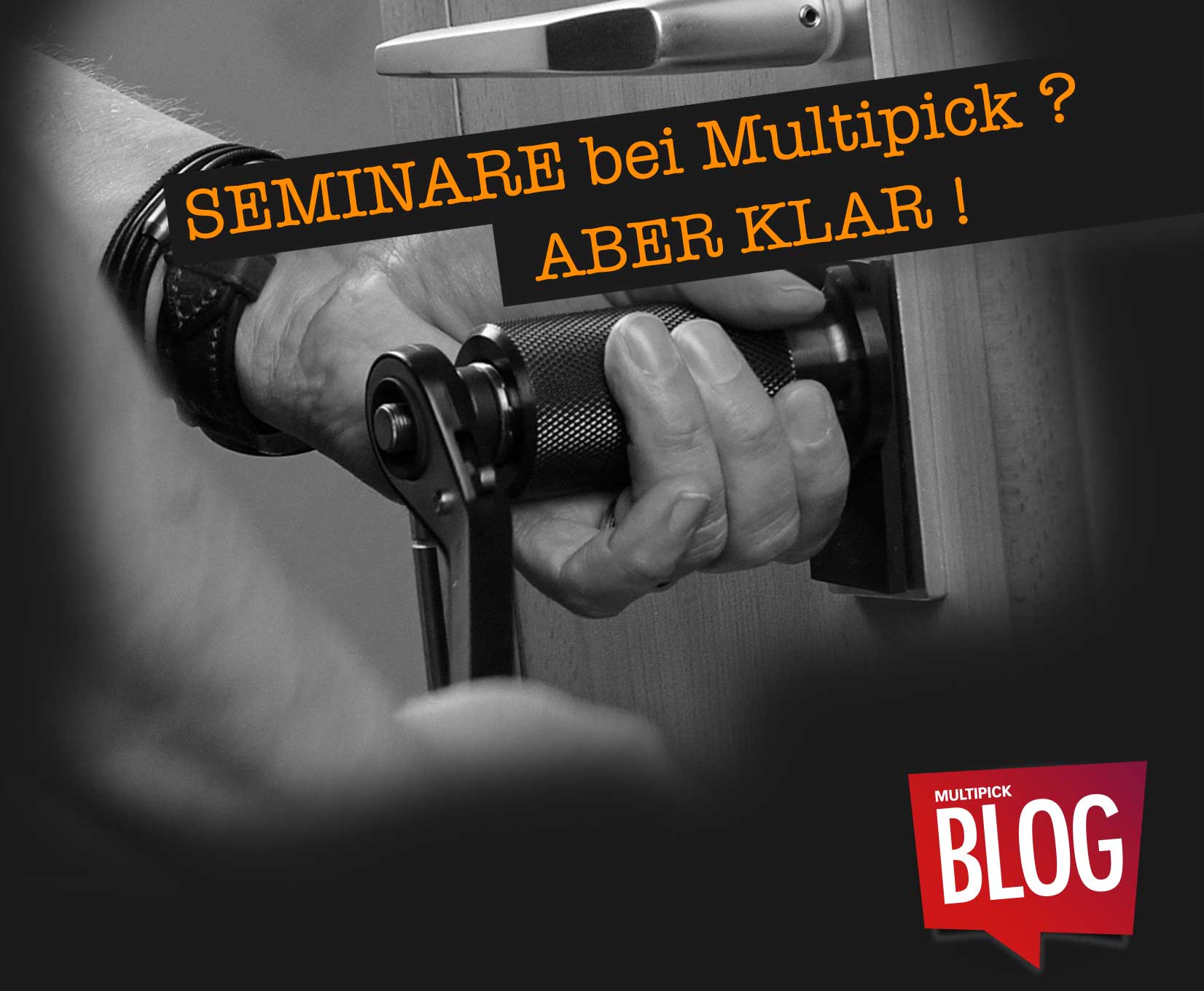
Reading time: 8 minutes / Lars Buchwald / 20.06.2025
Burglary Protection Myths – and What Really Helps
Table of Contents
→ That only happens to other people …
→ Myth 1: “A good lock is enough”
→ Myth 2: “Alarm systems are a guaranteed deterrent”
→ Myth 3: “Burglars come at night and use lock picks”
→ Myth 4: “If they want in, they’ll get in anyway”
→ Personal Experience: When Prevention Suddenly Becomes Visible
→ My Conclusion: Security Is Not a Myth – It’s Achievable
→ Key Takeaways on Burglary Protection
Some time ago, I spoke with one of our locksmith customers. He was visiting us to buy some tools and told me about an incident that happened just a few weeks earlier: An elderly couple near Bonn was convinced that their high-quality locking cylinder was more than sufficient. Their firm belief: “No one’s getting in” and “There’s nothing worth stealing here anyway.”
That only happens to other people …
With angelic patience, our customer tried to explain to them that leaving windows tilted open while away from home is a bad idea – even with a high-end lock. Unfortunately, they had to learn that lesson the hard way: Three weeks later, burglars used a simple screwdriver to pry the window open – and found themselves in the living room. As it turned out, there actually was quite a bit to steal… but that’s not the point. Speaking from personal experience, I can say: a break-in is far more than “just” the loss of valuable items. It’s the disturbing realization that a stranger has violated your most personal, supposedly safe space. That intrusion doesn’t just shake your sense of security – it leaves deep uncertainty and fear. What remains is not just material damage, but a feeling of helplessness and distrust. It took me a very long time to truly feel safe and comfortable again in my own home. This case clearly illustrates how misleading a subjective sense of security can be – especially when it's based on widespread myths. From our perspective as a manufacturer of lockpicking tools, it's high time to debunk these misconceptions and raise awareness for real security risks. In this article, I want to bust exactly those myths. Not theoretically – but with experienced insight from the field.
Myth 1: “A good lock is enough”
Sure, a good lock is important – but it’s only part of the picture. Many people underestimate that burglars often target the weak points around it: poorly anchored fittings, outdated door frames, or windows that can be pried open with a screwdriver in seconds. What really helps: Burglary protection starts with the big picture. Professional security consultations reveal vulnerabilities that laypeople often miss. Modern protection strategies combine mechanical security (e.g. certified cylinders, reinforced fittings, mushroom head locking mechanisms) with deterrents (e.g. lighting and cameras).
Myth 2: “Alarm systems are a guaranteed deterrent”
Many people rely on their alarm system – and are surprised after a break-in that it didn’t do the job. The problem is blind trust. Alarm systems are important – but they usually alert you *after* someone is already inside. And that’s exactly what you want to avoid. What really helps: Secure things mechanically first, then enhance with electronics. A door that doesn’t open in the first place doesn’t need a siren. Also: if you invest in an alarm system, make sure it’s high quality and professionally installed. Cheap systems with weak Wi-Fi or faulty triggers cause more risk than protection. By the time you’ve had your second police call-out, you might be shocked at the bill.



Myth 3: “Burglars come at night and use lock picks”
Thanks, Hollywood. Most break-ins actually happen during the day – between 10:00 a.m. and 4:00 p.m., when no one is home. And instead of using advanced lockpicking tools, burglars mostly rely on screwdrivers, crowbars or – quite simply – open windows. What really helps: Break your daily routines. Always close windows, even if you’re leaving just briefly. Involve your neighbors, inform delivery drivers – and stay aware that burglars don’t come with snap tools or pulling bells, but with basic levering techniques.
Myth 4: “If they want in, they’ll get in anyway”
This attitude is unfortunately widespread – and dangerous. It leads to resignation instead of prevention. Yes, 100% security doesn’t exist. But most burglars give up if they don’t succeed quickly. Studies show: If they can’t get in within 3–5 minutes, many abandon the attempt (Source: met.police.uk). What really helps: This is exactly where good security technology comes in – it buys you time. If you can block easy access, you’ve already won.

Personal Experience: When Prevention Suddenly Becomes Visible
Once you've upgraded your home with reinforced door systems, better window locks, or other security measures, you've already taken a big step. But then something very human happens: time passes. Years go by – luckily without incident. And eventually, that thought creeps in: “Was that really necessary? Nothing ever happens here …” Until one day, clear signs of a break-in attempt appear on your front door or window. The intruders failed, the technology held up – and the break-in remained just an attempt. In that moment, it becomes clear just how valuable every single one of those measures really was. I remember my neighbor who experienced exactly that: Eight months after upgrading his home, he stood at his door with the police. Someone had tried to break in – and failed. No alarm, no damage. The intruders were simply stopped by the hardware. For me, that was a key moment. Because it shows that prevention isn’t just theory. It works.
My Conclusion: Security Is Not a Myth – It’s Achievable
If you want to protect yourself from break-ins, you don’t need panic – just a realistic understanding. Myths create illusions, not safety. The good news: Real solutions exist. And they work – if you know what really matters.
Key Takeaways on Burglary Protection
How effective are visible security measures like cameras or motion detectors?
Visible technology acts as a deterrent. Burglars look for the easiest target. When they see cameras, motion sensors, or clearly visible additional locks, it increases the risk – and they often move on.
Are smart home systems truly secure?
Not always. Many low-cost systems are vulnerable to cyberattacks or malfunctions. Make sure to use encrypted communication, certified systems, and install regular updates. Still, mechanical security remains the foundation of effective burglary protection.
How effective is safety glass or burglary-resistant glazing?
Very effective. Burglary-resistant windows (at least resistance class RC2) make smashing much more difficult. Ideally, they should be combined with lockable window handles and mushroom-head locking mechanisms.
Are there financial incentives for burglary protection?
Yes. In Germany, for example, the KfW (Kreditanstalt für Wiederaufbau) supports burglary protection measures with grants or low-interest loans – especially for retrofitting. Implementation must be carried out by certified professionals. In other countries, please contact the relevant authorities for information on support programs.
What should tenants consider if they want to upgrade their security?
Always ask the landlord first. Smaller upgrades like peepholes or additional locks are usually permitted. More extensive installations typically require approval. Good alternatives include mobile alarm systems or door security bars that don’t require structural modifications.
How do burglars behave when people are home?
In general, burglars avoid any confrontation. Most offenders want no direct contact with occupants. If it does happen: never confront them – retreat immediately and call the police. It’s also important not to show predictable routines – using light timers can help.
How can I secure my vacation home or weekend cottage?
These properties are considered especially at risk. Good mechanical protection, modern smart alarm systems, and regular checks by neighbors or security services are essential. Additional protection: security films and lockable shutters.
How does burglary protection affect insurance?
Improved security generally has a positive effect. Many insurers reward upgraded security systems with lower premiums or extended coverage. But caution: failure to comply with specific security requirements may result in reduced compensation in the event of a claim.
Are there common mistakes when installing security equipment?
Unfortunately, yes. Common errors include incorrect mounting height for cameras, unstable fittings for additional locks, or neglecting side entrances like basement or back doors. A well-thought-out overall concept, ideally planned by professionals, is always recommended.
What can I do regularly to stay safe?
Safety starts with everyday habits. A checklist every 3–6 months helps:
• Are all locks and reinforcements working properly?
• Are window handles lockable and firmly attached?
• Has the alarm system been tested?
• Are motion detectors correctly aligned?
• Are nameplates and mailboxes labeled neutrally (no indication of “single-person household”)?
This kind of simple prevention can make a big difference.
About the Author
Lars Buchwald has been an integral part of the Multipick team since 2006, where he dedicates his passion and expertise to marketing and graphics. As a trained graphic designer and copywriter, he brings a wealth of experience and creativity to his work, which enables him to convey the messages of the ingenious tools in an appealing and convincing way. With a keen sense for the needs of the target group, he steers Multipick's marketing fortunes. His commitment is characterized by a high degree of sensitivity and the right richer at the right time.
As a native of Bonn, Lars not only has close ties to the region, but has also firmly integrated his passion for marketing spear tools into his professional work. His attachment to the city is reflected in his work and gives his marketing campaigns an authentic, Bonn touch.
Related Articles
Now New - Multipick Seminars
Professional door opening seminars - training for fire brigades, locksmiths and caretakers.
About Multipick
Multipick was established here in Bonn in 1997 and has had its headquarters and production facilities here on the Rhine ever since.
Why should we leave here? Anyone who has been here before will agree that it is a very beautiful place and that the people are ‘typically Rhineland’, open-minded and friendly. From an early stage, we began to occupy ourselves with a wide variety of entry tools. We tried out lock snappers and core extractors such as the Bell and gathered a wealth of experience with a wide variety of tools. Whether it was a lock pick set or special tools for fire brigades and locksmiths, in the end the door or window had to be opened. In line with the motto, you got the problem and we got the solution.
Many tools, irrespective of hobby or professional, are dispatched from our warehouse to destinations throughout the world.
Opening tool kits for caretakers and locksmiths, pick sets and lock picking accessories for Locksport enthusiasts and Hobbs hooks for specialists to unlock locked safes. There are thousands of different ways to deploy our specialised tools. Our TFG latch plates and key turners allow a closed door to be reopened. QA Pro 2 and our V-Pro core pulling screws can be used to open a locked door. We also offer milling burrs and drill bits for those situations where there really is no other way. Many useful aids such as MICA opening cards, wedges, door latch spatulas, door handle catches and spiral openers, which are all useful tools to help you get the job done. But even if things get a bit complicated, you are in good hands with us. Products such as the Kronos and Artemis electric picks are our top highlights. Anyone who likes to open dimple locks or disc locks will be delighted with the ARES system. For opening windows, we offer you a range of top products from Kipp-Blitz. Favoured by emergency services such as the fire brigade, THW (Federal Agency for Technical Relief) and police. Many of our tools are manufactured in-house. This gives us the liberty to manufacture quickly and in a customer-orientated manner. No lengthy supply chains and subcontractor dependencies. This has a number of advantages both for you and, of course, for our environment. One big advantage is that you get everything from a single source, enabling us to offer you consistent quality. This is also our promise to you, all from a single source, Made in Germany, Made in Bonn - promised.







































